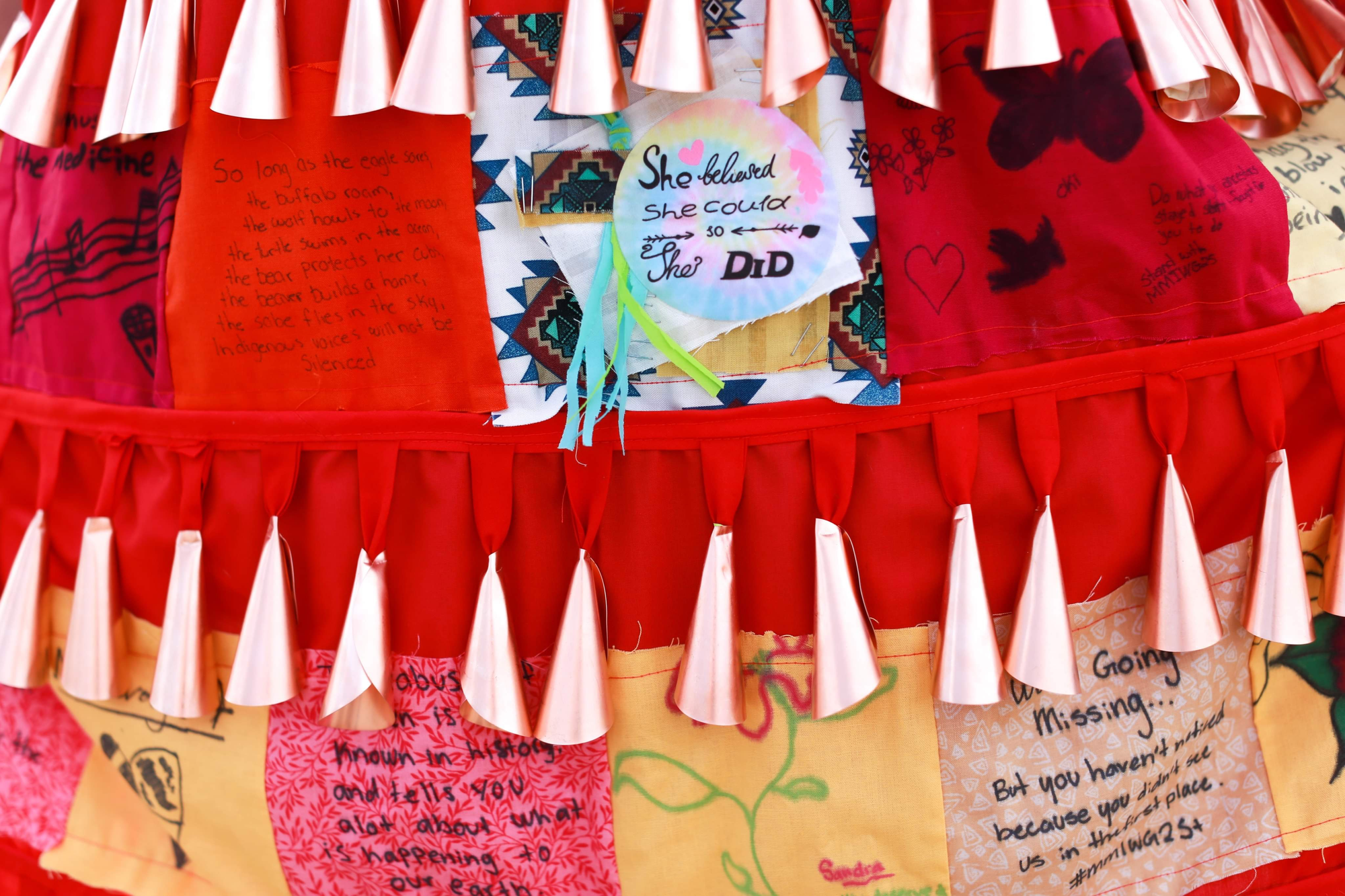With every patch of fabric or jingle bell sewn, Nevada Ouellette’s Indigenous Perspectives on Counselling and Wellness class at the University of Lethbridge compiled a resolute symbol of hope, healing and awareness. In Spring 2023, the Faculty of Health Sciences class came together to create a red jingle dress in honour of Missing and Murdered Indigenous Women and Girls (MMIWG).
It was a learning and healing process for everyone involved, including Aboriginal Health major Ksisskstakaki (Beaver Woman) Lacy Devine, and Addictions Counselling major Tetoush’nux (Singer of Thunderbird Songs), Foster Wright.
“Missing and murdered Indigenous women is such an epidemic in North America, not just Canada,” says Foster. “The inspiration (for the red jingle dress project) came from all of our hearts and the fact that women touch all of our lives. And the understanding of that I think really came to fruition when we did this project.”
Lacy, who is Blackfoot, had recently finished sewing her first jingle dress for her youngest daughter. Teaming up with her classmates who also had sewing experience, they got to work, cutting out the form of the dress, hemming it and sewing on the jingles. “As a group, we came together,” says Lacy. “Everyone brought in their own unique interpretation. Even within the class, we were able to talk about certain things that may have been brought up from our past which was tough.”
The class collectively came up with the idea of what messages to put on the dress. They decided on small patches that express messages of love, hope and awareness.
“Part of the jingle dress project was putting little notes into the jingles,” says Lacy. “Some wrote poems, some drew pictures, some wrote about awareness… And they were kind of like reflections of ourselves such as ‘You're wonderful. You're cared about. You’re loved.’ The jingle dress originated from the Anishinaabe or Ojibwe people, and part of the story is the jingle dress brings healing. So, my interpretation of this project and the notes is that's what it was for—bringing that healing to the stress.” The red jingle dress also features handprints drawn by a classmate, which has become a symbolic representation to spread awareness and show solidarity around MMIWG.
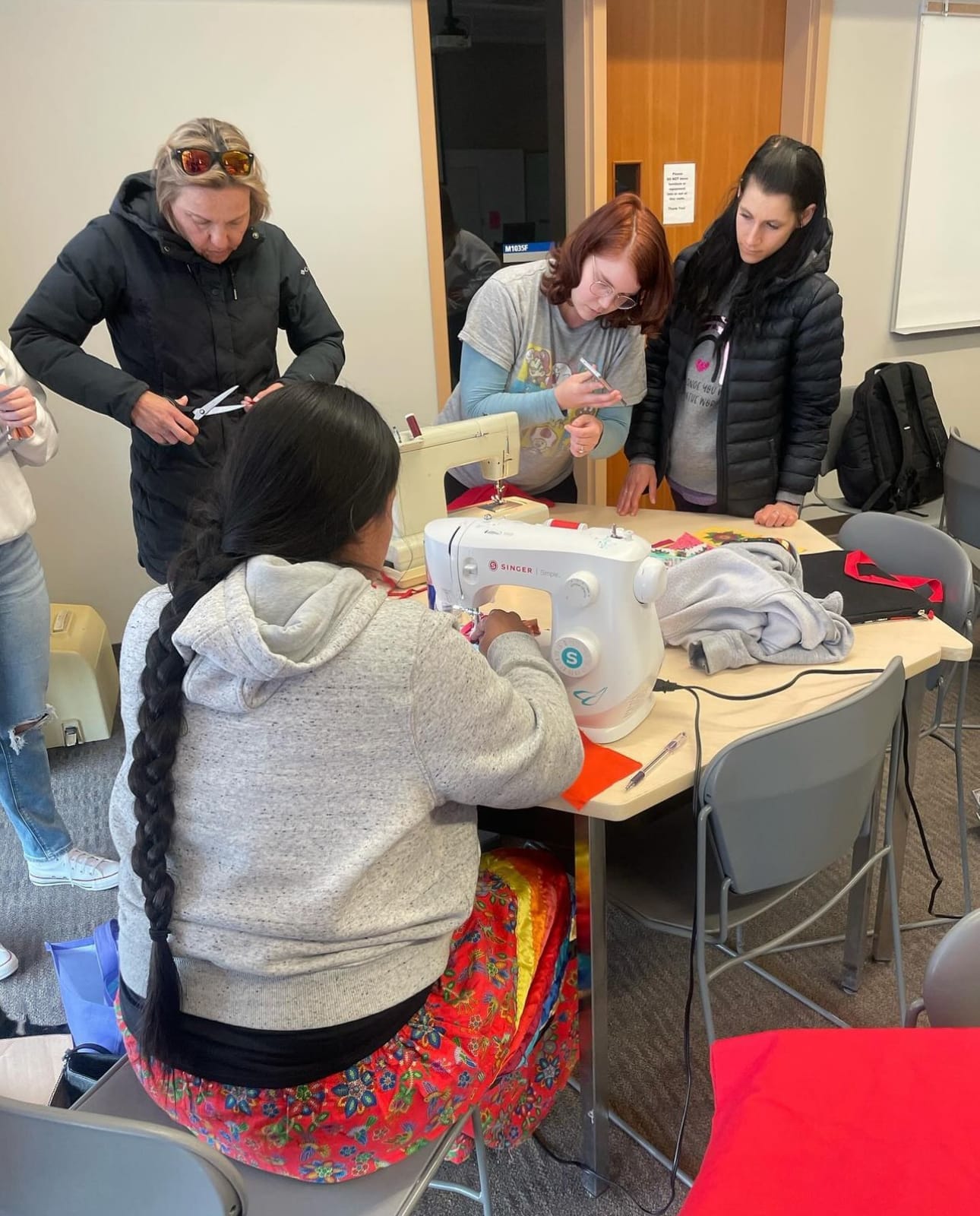
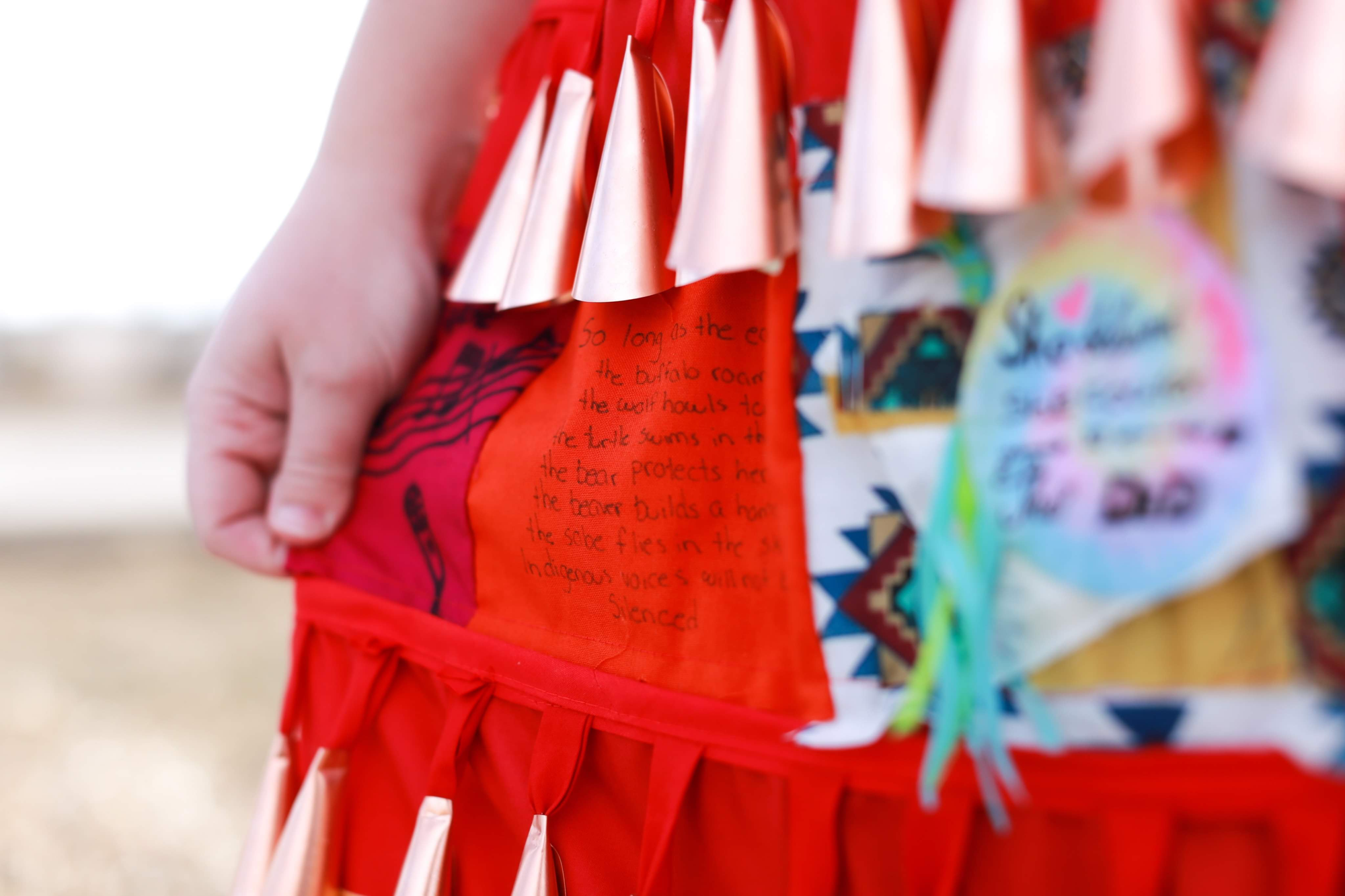
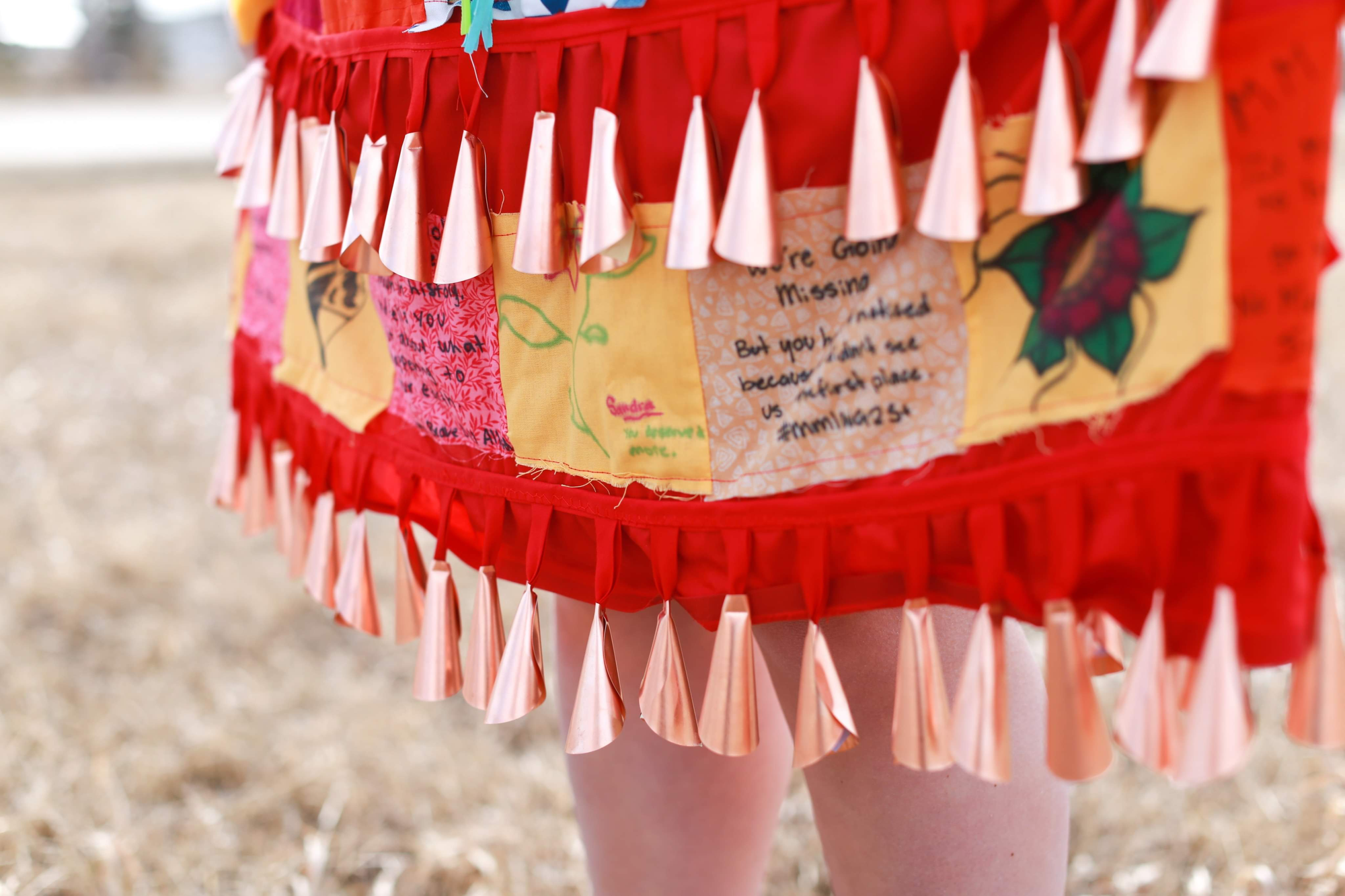
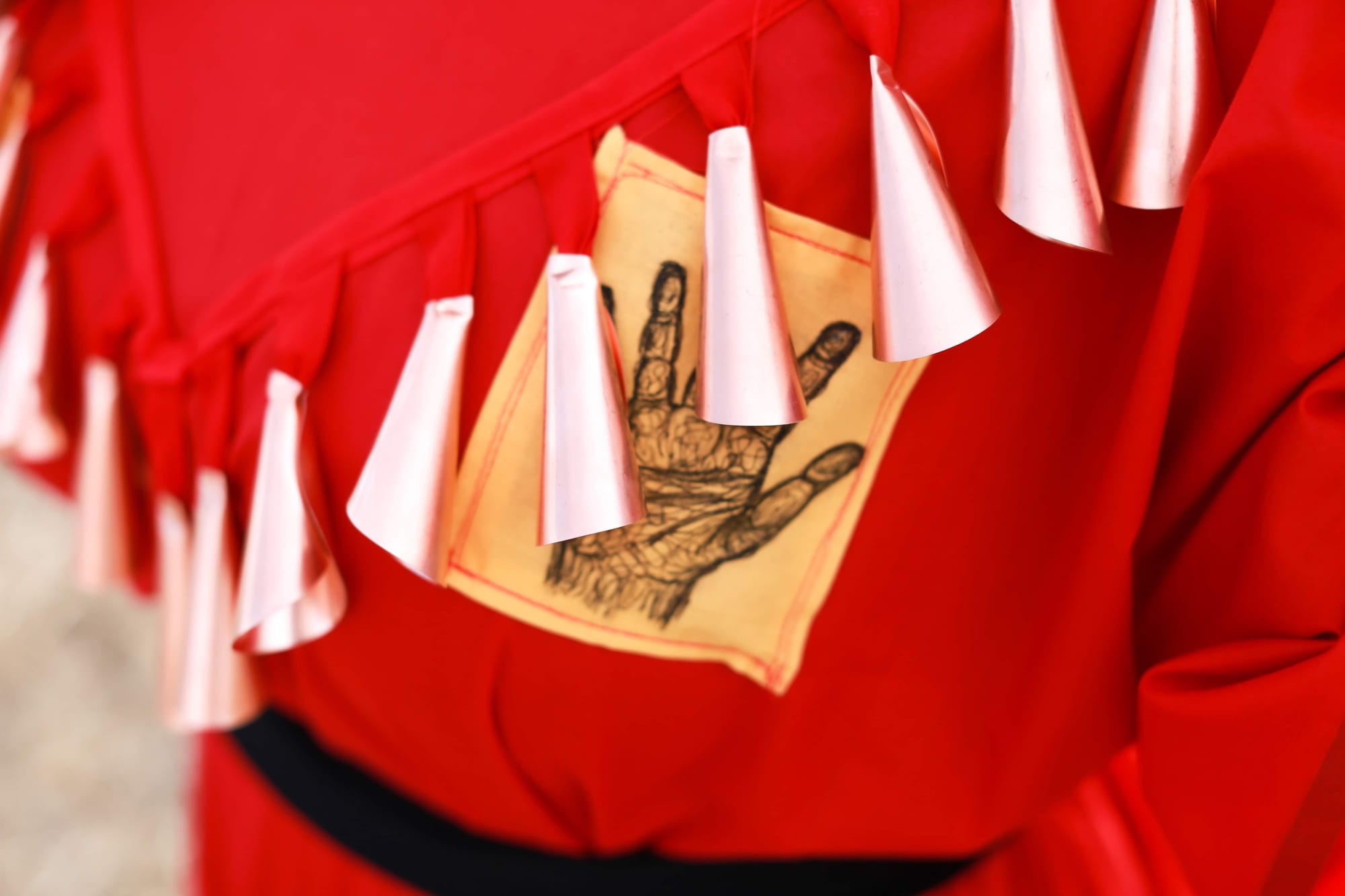
This class was “unconventional” compared to typical university classes, Lacy explains, with lots of activities to understand the informed trauma aspect of residential school and Indigenous intergenerational trauma. “As an Indigenous person, being in a class about Indigenous trauma and being able to understand that, it is tough,” she says. Every day during class time, they would smudge and pray to have a good class.
“It was such a great spiritual experience to have in academia that you don’t typically experience unless you go to other institutions that are more Indigenous-focused,” says Lacy. “It was a good, refreshing feeling to have that in Nevada’s class.”
Over the course of the semester, residential school survivors came in to share their stories, as well as victims of discrimination and institutional racism. It was an emotional couple of months of learning, sharing and growing. Foster says being born with an empathetic heart and being part of a program that teaches empathy, coupled with his own family’s intergenerational trauma, made it especially challenging. “Talking about residential schools and thinking about my family and the people that I've known that have been affected by it and it just rips my heart in half,” he says. “I'm going to predict that it was hard for a lot of people because there were tears shed in my class and we all shared it together.”
As a mother with daughters, this project and the impact of MMIWG strikes close to home for Lacy. According to statistics, Indigenous women and girls are four times more likely than non-Indigenous women to experience violence. Indigenous women and girls also go missing at a rate much higher than any other population in Canada. Lacy says these statistics have caused her to become extra protective over her children. “It doesn't matter how well educated I am. It doesn't matter what kind of vehicle I drive or where I live, or how my house looks, or if I look put together, those things don't matter,” she says. “If anything ever happens to me, the only people that are going to care is my family, and that's what strikes me the most. It's interesting how disregarded Indigenous people are.”
October 4 is the National Day of Action for MMIWG. To honour this day, and in recognition of the importance of Indigenous wellness and mental health, Iikaisskini Indigenous Services and the University of Lethbridge Students’ Union organized an event on October 11, 2023. It featured Blackfoot singers, drummers and dancing, and a video presentation and talk from those involved in the creation of the dress. The red jingle dress is currently on display outside the Iikaisskini (Low Horn) Indigenous Services office (E610) in University Hall.



Lacy is the first generation in her family not to attend residential school. Both of her parents attended residential school or day school, and Lacy has learned through them about the suffering they experienced and the silence that has gone along with the trauma. “It drives me crazy, but I can understand the trauma,” she says. “I feel it's great that everyone's becoming more aware.” Non-Indigenous allies to amplify the message are needed, Lacy says, to help advocate for Indigenous voices that are so often left unheard. Having open-minded and compassionate classmates showed Lacy that some are willing to put in the critical work to educate themselves and speak up.
“Seeing how genuine my classmates were and seeing their willingness to learn and to understand more about Indigenous people, it brings hope for me, as an Indigenous woman, that change could happen, that change is going to come,” says Lacy.
Foster agrees. He says the biggest takeaway for him from the class was that everyone was on the same side, pushing toward the same goal. “My grandmother always used to tell me surround yourself with people who understand you and understand what you're trying to do,” he says. “And I felt that in that class of 30 to 40 kids — it just felt amazing.”
While there are still a lot of misconceptions and misunderstandings, Lacy says the most important thing is education. “Knowledge is power. The more you know, the more you understand.”
